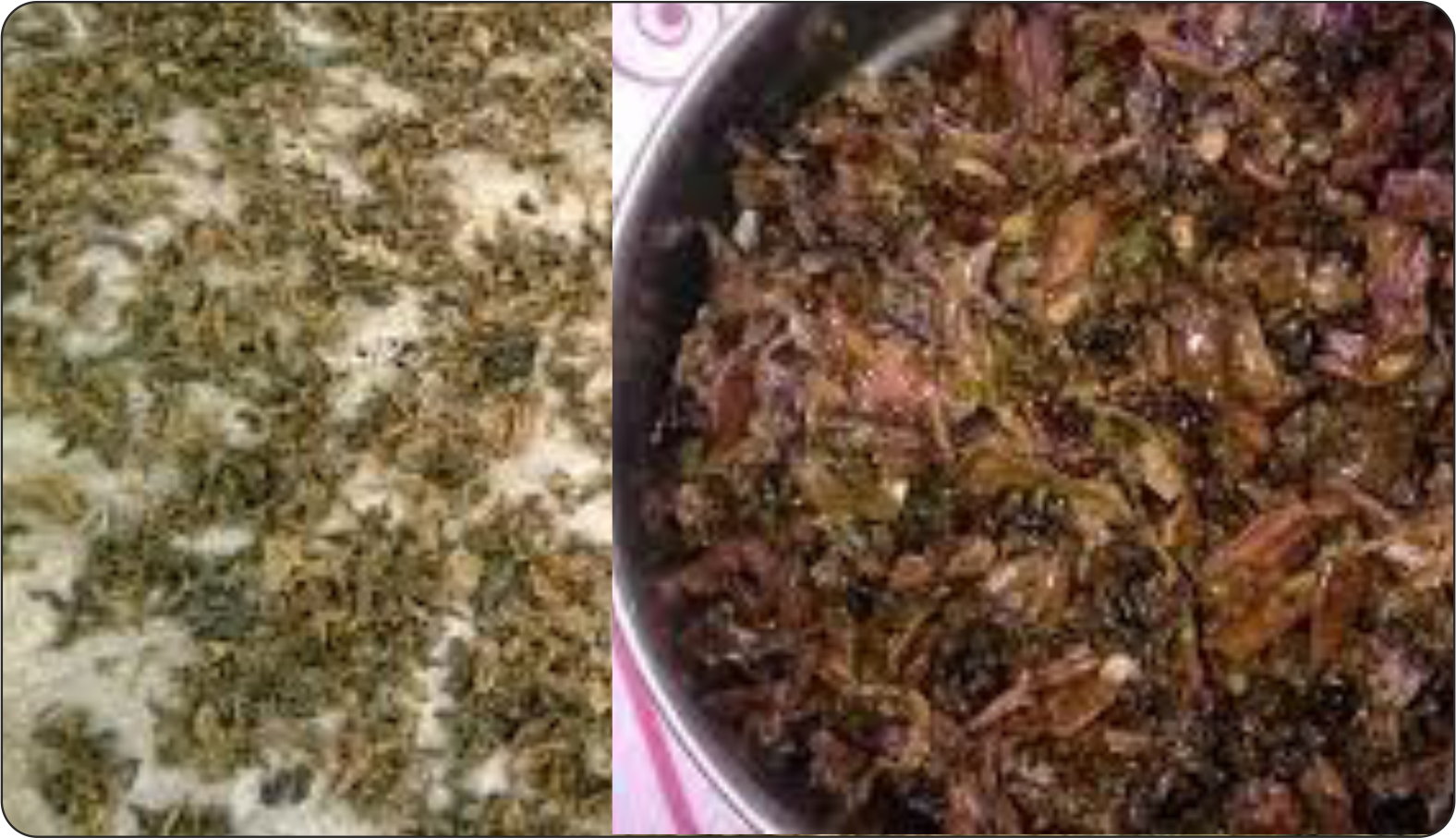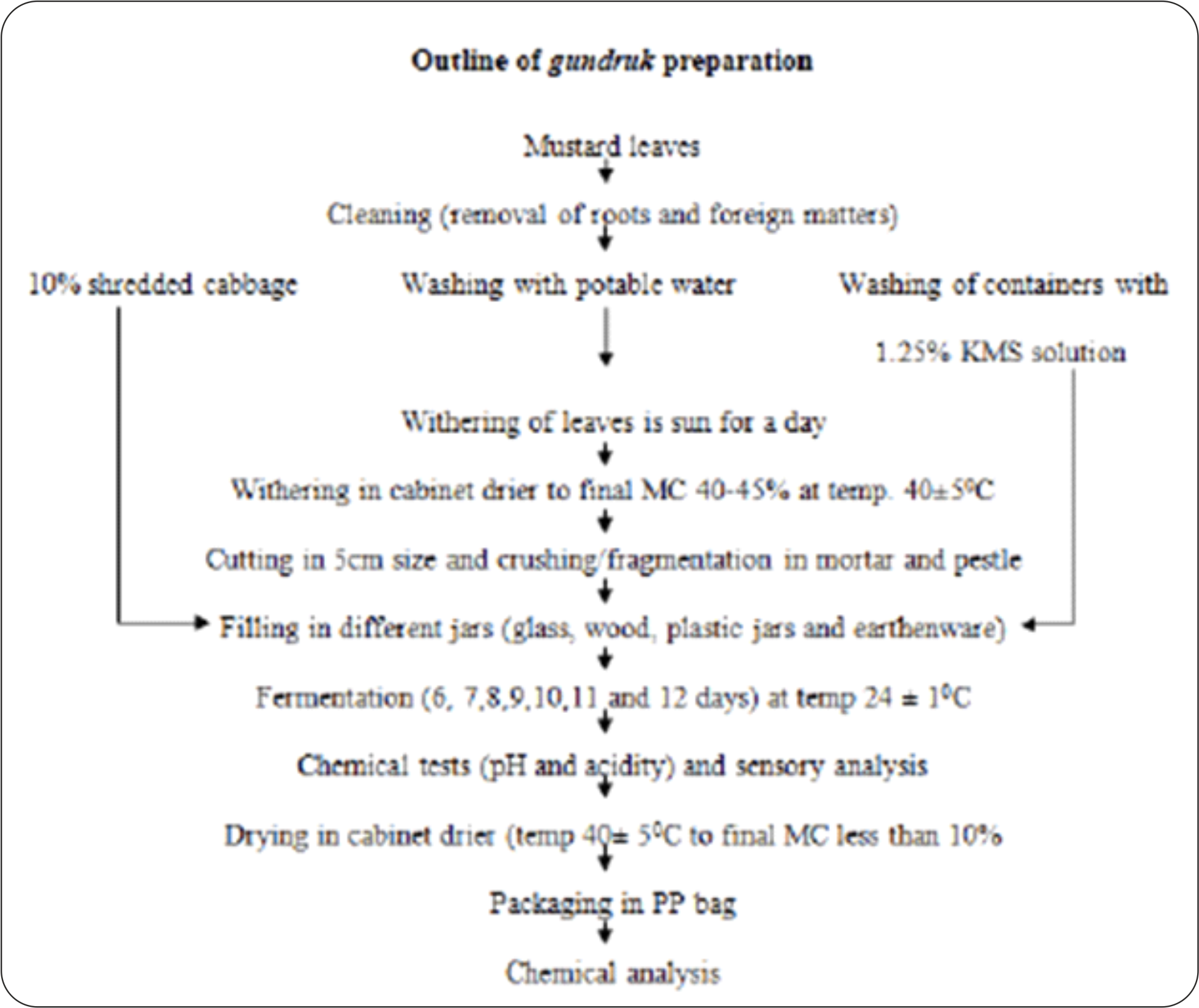Gundruk

Gundruk is most popular fermented foods of Nepal. It it is a traditional, non salted fermented leafy vegetable indigenous, is primarily appreciated for its uniquely appetizing taste or flavor. Gundruk is nutritious rich in concentrated source of minerals, vitamins, therapeutically active compounds. With daily basis consumption, gundruk can solves some of our nutritional problems (Upadhaya, 2002). Gundruk is more appreciated for its uniquely appetizing flavor. Gundruk is used as an alternative source of green vegetables in the lean season. The common raw material used for the preparation of gundruk is depending on the availability of the raw material mostly by mustard leaves. Other tham this gundruk has been prepared by using various other leaves, e.g. radish (Raphanus sativus), rapeseed (Brassica campestris var. toria), cauliflower (Brassica oleracea) etc (Upadhaya, 2002). Traditionally gundruk has been prepared at household levels using different fermentation mediums such as pit, dhungro and earthenware pots.
Microorganisms involved:
The most predominant organisms for the gundruk fermentation are Pediococcus and Lactobacillus species. The fermentation is initiated by L. cellobiosus and L. plantarum, and other homolactics make a vigorous growth from the third day onwards. Pediococcus pentosaceus increases in number on the fifth day and thereafter declines (Karki et al., 1983) During fermentation, the pH drops slowly to a final value of 4.0 and the amount of acid (as lactic) increases to about 1% on the sixth day (Karki et al., 1983).
Method of preparation:

References:
- Upadhaya, A. 2002. Preparation and Quality evaluation of gundruk. B. Tech. (Food), Dissertation, Tribhuvan Univ., Nepal.pp.3-11.
- Karki, T.B. Kozaki, M. and Itoh, H. 1983. Chemical changes Occurring in gundruk During Fermentation. Part II-2: Flavor components. Lebennsm-Wiss Technol. 16:203 - 208
